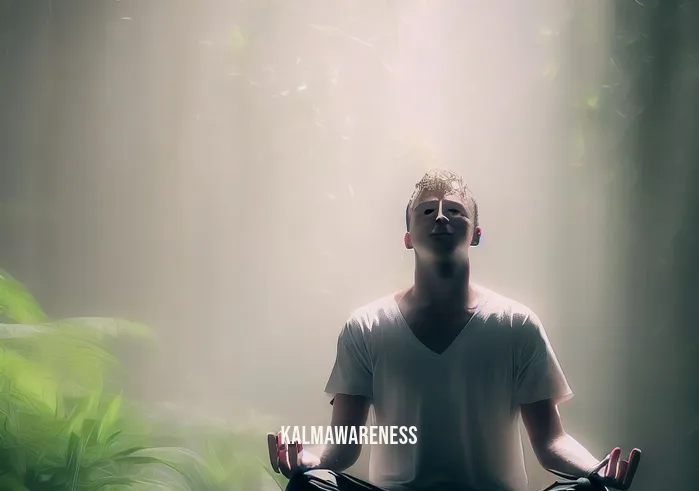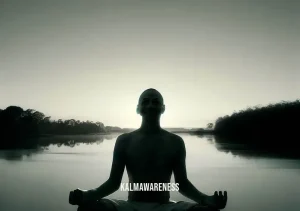Single Point Meditation: The Gateway to Profound Stillness and Presence
In today’s bustling world, distractions surround us. With countless tasks, obligations, and thoughts vying for our attention, finding a moment of calm can feel impossible. Yet, the practice of single point meditation promises a sanctuary amidst the chaos—a technique steeped in tradition that can usher one into a space of pure focus, concentration, and centeredness. Before diving into its nuances, we must understand its foundation. Single point meditation rests on certain pillars: Focus, Concentration, Centering, Stillness, and Presence, all intricately woven to achieve a state of heightened awareness.
What is Single Point Meditation?
At its core, single point meditation is a mindfulness practice aiming to anchor one’s attention on a single point of focus. This can be a visual point, a mantra, or even the rhythm of one’s breath. The idea is to train the mind to stay attentive, deflecting distractions, and staying in the present moment. It’s an art of being entirely centered and encapsulates the essence of the phrase from the link, “word for being present in the moment”.
The Pillars of Single Point Meditation
Focus: The primary aim of this meditation is to enhance our focused minds. Focus means directing our mental energy towards a singular point, unhampered by external or internal interruptions.
Concentration: While focus is the direction of our mental prowess, concentration is the intensity. It’s the ability to deeply engage with the subject at hand, akin to the profound depth mentioned in how we get deep so fast.
Centering: Much like the balance an elephant finds in meditation, centering involves grounding oneself. It’s about finding an internal equilibrium, where one feels neither pulled nor pushed by their surroundings.
Stillness: Beyond just a physical state, stillness in single point meditation is about achieving a tranquil mind. It’s reminiscent of the calm experienced in a desert meditation, where the vastness and silence create a sense of serenity.
Presence: Being truly present means fully experiencing the current moment. It’s the antidote to a wandering mind, and the practice of single point meditation can be one’s guide to achieving this. It’s a journey to understand the meaning behind “every time you come around” — that is, to be entirely present and accounted for every time one engages in an activity or with someone.
The Connection with Breathing and Meditation
Breathing forms the backbone of many meditation practices, and for a good reason. Our breath acts as an anchor, a constant amidst the ebb and flow of thoughts and emotions. By focusing on our breath, we are offered a tangible point of concentration. The “brief meditation on breath” delves into this concept further, elucidating how our inhalations and exhalations can be the gateway to mindfulness.
Setting the Stage for Mastery
Much like any skill, the mastery of single point meditation requires patience and consistent practice. The age-old adage, “if practice makes perfect, I’m practice’s baby”, holds true here. One must be willing to dedicate time, possibly starting with 7-minute meditation sessions and progressively lengthening them as one becomes more adept.
In our pursuit of focus, the modern world offers tools that can aid our practice. For instance, the use of binaural beats, specifically 6Hz beats, has been found to enhance concentration and meditation. For beginners, resources like “Meditation for Dummies” provide an easy entrance into this profound practice.
To conclude this introductory segment, single point meditation is a transformative tool—one that can guide individuals to a heightened state of focus, stillness, and presence. In our subsequent chapters, we’ll delve deeper into each of its pillars, provide practical techniques, and explore its numerous benefits.
Are you ready to embark on this enlightening journey? Continue reading to unearth the depths of each pillar, starting with the profound realm of focus in the next segment.
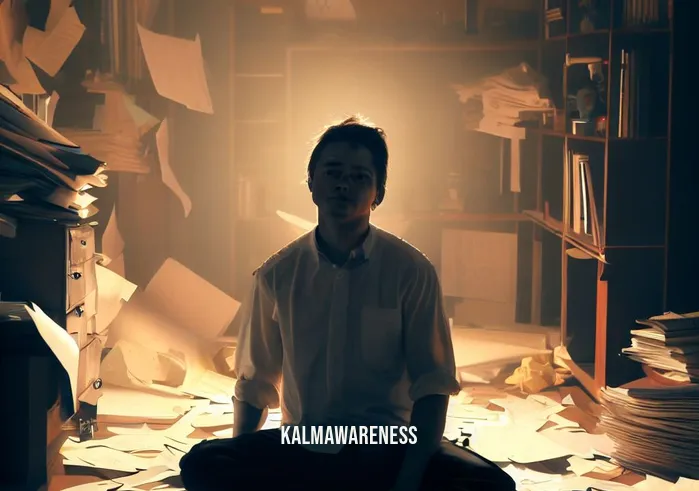
Expanding Horizons: The Multifaceted Layers of Single Point Meditation
Single point meditation, while seemingly simplistic in its approach, is deeply layered with meaning and nuance. As one peels back these layers, a world of understanding unfolds—revealing the potency of this ancient practice. Let’s delve deeper into its various facets, understanding its significance and how it stands apart from other meditation techniques.
Beyond Simple Focus: The Impact of Single Point Meditation
At a first glance, one might surmise that single point meditation is merely about concentration. However, its benefits extend far beyond sharpened focus. This practice offers:
Emotional Equilibrium: A consistent practice helps in balancing emotions, preventing extreme reactions to life’s ups and downs.
Enhanced Clarity: By continually bringing the mind to a single point, one can experience clearer thinking and improved decision-making abilities.
Physical Relaxation: Engaging deeply in this form of meditation helps release muscular tension and reduces stress hormones, as demonstrated by methods like the HUG technique.
Heightened Presence: The act of concentrating on one focal point enhances one’s ability to be fully present, embodying the essence of true embodiment.
Enhanced Multitasking Abilities: Ironically, by training the mind to focus singularly, one becomes better equipped to juggle multiple tasks, understanding which is better: mindfulness or multitasking.
The Varieties of Single Point Concentration
Single point meditation can be practiced in multiple ways, each bringing its own flavor to the experience. Some of these methods include:
Visual Focus: Concentrating on a particular image or object, such as the flame of a candle.
Auditory Focus: Using sounds or chants as the focal point. Techniques involving binaural beats, especially for ADHD, fall into this category.
Tactile Focus: Drawing awareness to a physical sensation, like the method mentioned in “touch that body part”, where concentration is directed to various body parts sequentially.
Mental Focus: Using a mantra or a specific thought as the anchor.
Breath-based Focus: This involves directing all attention to the act of breathing, feeling each inhalation and exhalation.
Comparing Single Point Meditation with Other Techniques
To truly appreciate the depth of single point meditation, it’s vital to understand how it stands in comparison to other techniques. Here’s a concise table showcasing the differences:
| Technique | Primary Focus | Benefits |
|---|---|---|
| Single Point Meditation | One focal point | Enhanced clarity, emotional equilibrium |
| Gassho Meditation | Hands and gratitude | Develops gratitude, fosters connectivity |
| Flight Rising Meditation | Ascending energy | Boosts vitality, invokes spiritual ascent |
| Mindfulness Meditation | The present moment | Increases awareness, reduces stress |
| Keep in Mind Meditation | Intentional thoughts | Builds positive mental patterns |
As evident from the table, while there’s overlap in benefits, each technique has a unique focal point and subsequent advantages. Single point meditation’s emphasis on a singular focus distinguishes it, promising heightened clarity and emotional balance.
Preparing for the Next Step
Having unraveled the intricate layers of single point meditation, it’s evident that its benefits permeate every aspect of our being—mental, emotional, and physical. Its beauty lies in its simplicity, yet the depths it can take one to are profound.
As we journey ahead, we’ll delve into the art of mastering single point meditation, understanding its challenges, and the tools that can facilitate a deeper immersion. Continue reading to discover the transformative power of this practice, as we venture into its practical application in the next segment.

Illuminating the Path: Inspirations from Single Point Meditation
Single point meditation is more than just a technique—it’s a guiding light, a beacon of hope for many. Throughout history, spiritual leaders, everyday individuals, and even scientific researchers have found inspiration in this timeless practice, drawing strength, clarity, and a renewed sense of purpose. This chapter unveils some of these inspiring tales and profound quotes that resonate with the heart of this meditation form.
A Tapestry of Real-life Stories
Maya’s Journey to Self-Healing:
After a tragic loss, Maya felt adrift, with grief clouding her every moment. Discovering single point meditation through a workshop based on “how we get deep so fast”, she began to anchor her attention to the simple act of breathing. With every focused session, she felt a sliver of light piercing through her darkness, gradually leading her back to life’s embrace.
Dylan’s Escape from the Chaos:
As a top executive, Dylan’s life was a whirlwind of decisions, meetings, and pressures. The weight of responsibilities started taking a toll on his mental health. It was the practice of “touch that body part” within single point meditation that became his sanctuary. Through this tactile focus, he found moments of serenity amidst the storm, reconnecting him with his inner wisdom.
Aria and the Gift of Presence:
Being a mother to triplets, Aria’s life was a beautiful cacophony. But she often felt she wasn’t entirely present for her children. Stumbling upon the insights from “word for being present in the moment”, she embarked on the journey of single point meditation. It transformed her interactions, enabling her to cherish every laugh, tear, and hug with her little ones.
Resonating Quotes on Hope and Meditation
In the vast ocean of wisdom, certain quotes stand out, encapsulating the essence of single point meditation and the hope it fosters:
“In the stillness of single-focused meditation, we discover the soul’s symphony.” – Anon.
“Through the silent corridors of meditation, we find hope’s brightest flame.” – Lysandra M. Reese
“Where the mind wavers, let the breath be its anchor, guiding it back to the heart’s sanctuary.” – Master Shoji
“Every moment of centered presence is a step away from chaos and a leap into clarity.” – Gareth T. Lunis
“In the dance of breath and attention, single point meditation reveals life’s profound simplicity.” – Elara K. Fields
The Beacon of Single Point Meditation
These tales and quotes underscore a universal truth: when approached with dedication and an open heart, single point meditation can be transformative. It’s not just about enhancing focus or clarity but about rediscovering hope, meaning, and inspiration in the tapestry of life.
To many, this form of meditation acts as a lighthouse, guiding them safely through life’s turbulent waters. Its promise isn’t merely about better concentration but a deeper, more profound connection to one’s essence and the world around.
Peeking into the Future
While we’ve delved deep into the inspirations drawn from single point meditation, it’s vital to understand how to cultivate this practice sustainably. The road to mastering this form can have its challenges, but with the right tools and mindset, it’s a journey filled with profound insights and growth.
Eager to know more? Continue reading as we venture into the practical steps, challenges, and tips to enrich your single point meditation experience in the next chapter. Unearth the secrets that make this practice a transformative tool for countless souls across the globe.
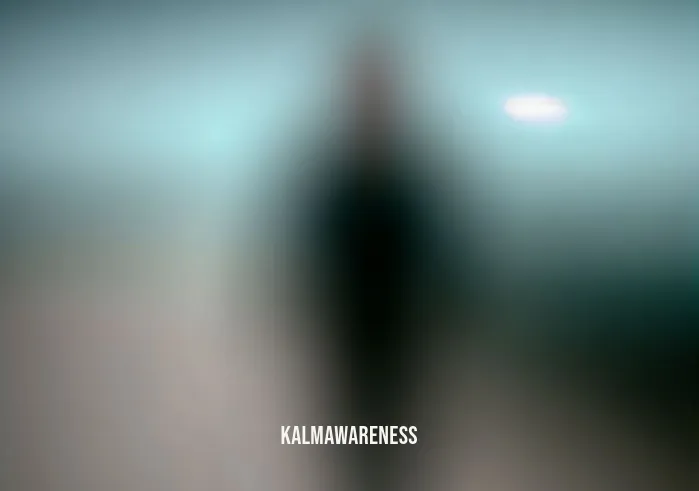
Navigating the Depths: Unpacking Single Point Meditation
In our journey through the world of single point meditation, we’ve seen its inspirational power and its multifaceted nature. Now, it’s time to break down the practice further, offering a granular understanding of this profound method. Through bullet points and organized lists, we’ll dissect the intricacies of single point meditation, laying it out in digestible chunks for both beginners and seasoned practitioners alike.
The Core Elements of Single Point Meditation
Anchor Point: The specific focal point chosen for meditation. It can range from a visual object, an auditory stimulus like binaural beats, or a tactile sensation.
Attention: The continuous process of bringing one’s mind back to the anchor point whenever it drifts away.
Observation: Maintaining a non-judgmental awareness of one’s thoughts and emotions during the practice, similar to the insights shared in “relax and be aware”.
Consistency: The regular practice of this meditation, emphasizing the old saying “if practice makes perfect, I’m practice’s baby”.
Environment: Ensuring a conducive environment for the meditation, free from disturbances.
Benefits Categorized by Life Aspects
Mental:
- Enhanced clarity and decision-making
- Improved memory and cognitive functions
- Reduction in overthinking
Emotional:
- Greater emotional stability and resilience
- Enhanced self-awareness
- Reduction in anxiety and depression symptoms
Physical:
- Lowered blood pressure and heart rate
- Improved sleep patterns
- Enhanced immune system function, which can be further understood in articles like “7-minute meditation”.
Spiritual:
- Deeper connection to one’s inner self
- A heightened sense of purpose and meaning
- Enhanced intuition and synchronicities in life
Common Misconceptions
It’s about emptying the mind: While the aim is focus, it’s not about creating a void. It’s about observing without judgment.
Only for the spiritually inclined: This practice is as much scientific as it is spiritual. Its benefits span across all facets of life, as can be seen from articles like “which is better, mindfulness or multitasking”.
Requires long hours: Even short, consistent sessions can yield results, making it an accessible practice for all.
Essential Tools and Aids
Guided Sessions: For beginners, guided meditations can be beneficial. Platforms like “meditation for dummies” can be excellent starting points.
Timers: Using a timer can help set a duration for the practice without the constant need to check the clock.
Journals: Keeping a meditation journal can help track progress, insights, and patterns over time.
Aids: Elements like binaural beats for ADHD can be instrumental in enhancing the meditation experience for certain individuals.
Venturing Forward
As we’ve deconstructed single point meditation, it’s clear that its simplicity is its strength. Each component, each benefit, and even the misconceptions around it provide a perspective, enhancing our overall understanding of this profound practice.
But, as with any journey, understanding the map is just the beginning. The final chapter awaits, where we’ll integrate all we’ve learned, offering a comprehensive guide to adopting and mastering single point meditation in daily life. Dive in to see the transformative potential this practice holds for every seeker on this path. Continue reading to conclude this enlightening voyage into the heart of single point meditation.
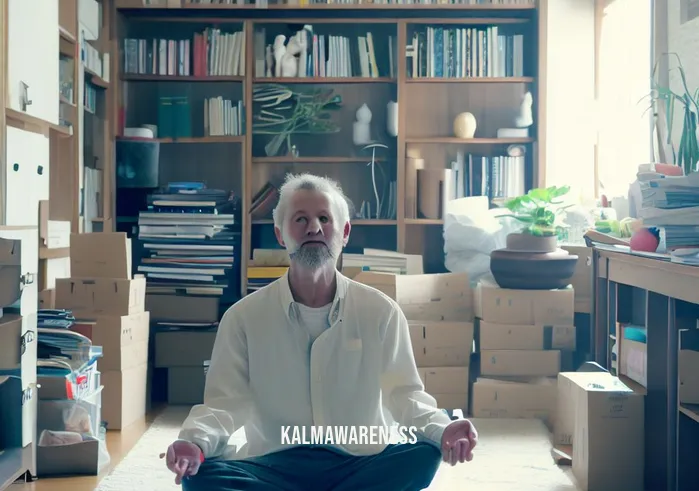
Reflecting on the Stillness: Single Point Meditation’s Enriching Voyage
Our exploration of single point meditation has been enlightening, traversing through its nuances, inspirations, practicalities, and intricacies. It’s been a voyage not just of understanding a technique, but of connecting with an age-old wisdom that promises clarity amidst chaos, peace amidst turmoil, and presence amidst distraction.
Glimpses of Our Journey
We began by uncovering the foundational pillars of this practice: the art of focus, the beauty of centeredness, the peace in stillness, and the magic of being truly present. We’ve heard stories of transformation, resonated with poignant quotes, and learned the practical aspects to ensure an effective practice.
Methods like “touch that body part” showcased how varied and versatile single point meditation can be, while articles such as “relax and be aware” reinforced its universal relevance.
Taking It Forward: Applying the Wisdom
Single point meditation isn’t merely a concept to be understood—it’s a practice to be lived. Here’s how you can embed it into your daily life:
Morning Ritual: Start your day with a short session, setting a tone of mindfulness.
Stressful Moments: Use the technique to center yourself during challenging times, drawing from insights such as those in “every time you come around”.
Mindful Tasks: Incorporate single point focus while doing daily tasks like washing dishes, walking, or even during conversations.
A Call to Dive Deeper
Your journey needn’t end here. Our magazine offers a plethora of insights on mindfulness, meditation, and holistic well-being. Delve deeper into the realm of meditation with topics like “gassho meditation” or explore the nuances of being present with insights from “word for being present in the moment”. And if you ever need a refresher on single point meditation, our chapters are always here to guide you.
Heartfelt Gratitude
Thank you for joining us on this enlightening voyage. We’re grateful for your time, curiosity, and openness to explore the profound realm of single point meditation. Every reader brings life to our content, and we’re humbled to be a part of your journey. As you continue exploring the vast landscape of mindfulness and meditation, remember this: the journey is as enriching as the destination. We promise to keep bringing you soul-nourishing content, insights, and tools in our future editions. Until then, stay centered, stay mindful, and keep exploring the depths of your inner universe.
